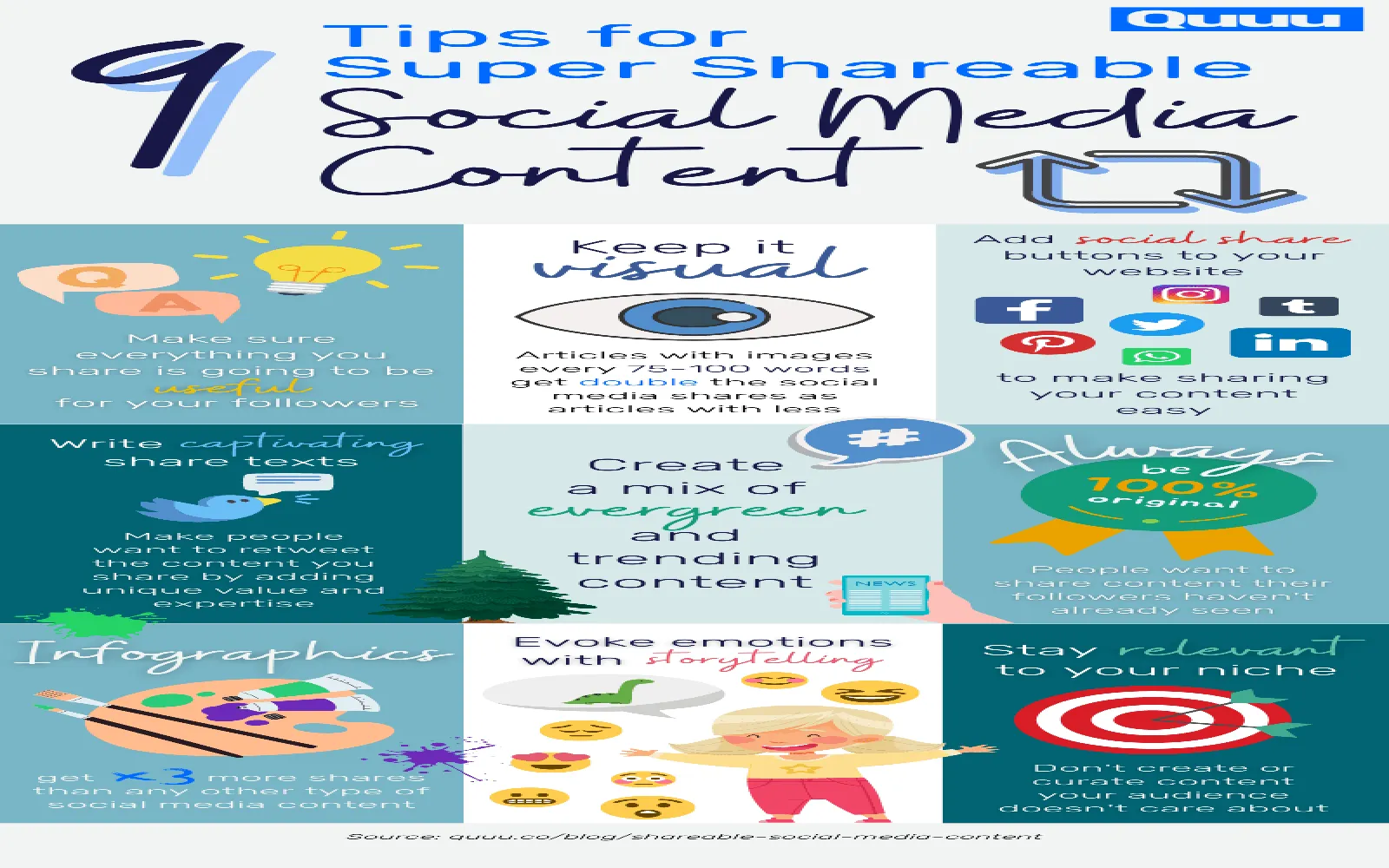Understanding Your Audience
Before diving into content creation, it's crucial to understand who your audience is. Analyzing demographics, interests, and online behavior can help tailor your content to meet their needs. Utilize tools like Google Analytics and social media insights to gather this information. Knowing your audience allows you to create targeted content that resonates with them, ultimately leading to higher engagement and conversions.
Types of Social Media Content
There are various types of content you can create for social media, each serving a different purpose. Here’s a breakdown of the most effective types:
| Content Type | Description | Best Platforms |
|---|---|---|
| Images | Eye-catching visuals that capture attention quickly. | Instagram, Facebook |
| Videos | Engaging and dynamic content that can tell a story. | YouTube, TikTok, Facebook |
| Infographics | Visually appealing way to present data and information. | Pinterest, LinkedIn |
| Live Videos | Real-time interaction that allows for immediate engagement. | Facebook, Instagram, YouTube |
| Blog Posts | Informative content that can drive traffic to your website. | LinkedIn, Facebook |
Crafting Compelling Messages
Once you know your audience and the types of content that work best, it's time to focus on your messaging. Here are some tips for crafting compelling messages:
- Be Authentic: Your audience appreciates honesty. Share your brand story and values to connect on a deeper level.
- Use Strong Calls-to-Action (CTAs): Encourage users to take action with clear and persuasive CTAs. Phrases like "Shop Now," "Learn More," or "Join Us Today" can drive conversions.
- Keep it Concise: Attention spans are short. Make your messages clear and to the point to maintain engagement.
- Utilize Emotional Triggers: Content that evokes emotions can lead to higher engagement rates. Use storytelling techniques to create an emotional connection.
Visuals That Capture Attention
Visual content is often more effective than text alone. Here’s why visuals are vital and how to incorporate them:
- Use High-Quality Images: Invest in professional photography or design to ensure your visuals are striking and relevant.
- Incorporate Brand Colors: Consistent use of brand colors helps with recognition and builds trust.
- Utilize Graphics and Charts: Infographics and data visualizations can make complex information easy to understand and shareable.
Scheduling and Frequency
Creating great content is only part of the equation; timing and frequency also play a significant role in engagement. Here are some best practices for scheduling your posts:
- Know Peak Times: Research and identify when your audience is most active on each platform. Tools like Hootsuite can help analyze this data.
- Consistency is Key: Develop a posting schedule that keeps your brand top of mind without overwhelming your audience.
- Engage with Your Audience: Monitor comments and messages. Responding promptly can enhance relationships and encourage more interactions.
Analytics and Adaptation
Lastly, track the performance of your social media content. Use analytics tools to measure engagement, reach, and conversions. Analyze what works and what doesn’t. This data-driven approach will help you refine your strategy over time. Here’s how to effectively utilize analytics:
- Set Clear Goals: Define what success looks like for each piece of content. Whether it's clicks, shares, or conversions, having measurable goals will guide your strategy.
- Review Regularly: Monthly or bi-weekly reviews can help identify trends and patterns in your content performance.
- Be Ready to Pivot: If certain types of content aren’t performing as expected, don’t be afraid to change your approach. Flexibility can lead to discovering more effective strategies.
Conclusion
Creating social media content that sells requires understanding your audience, crafting compelling messages, and analyzing performance. By focusing on high-quality visuals, engaging storytelling, and strategic scheduling, you can develop a social media strategy that not only attracts attention but also drives sales. Remember, the goal is to create content that resonates with your audience and encourages them to take action. With these strategies in place, you can harness the power of social media to boost your sales and grow your brand.





